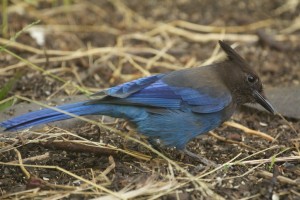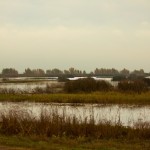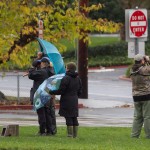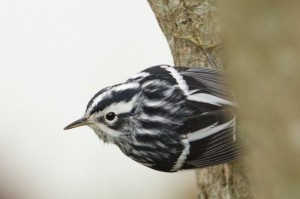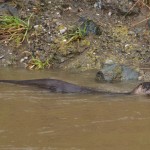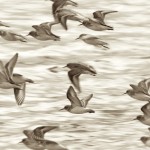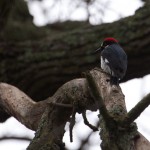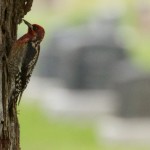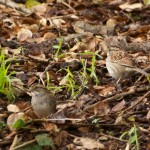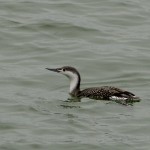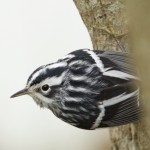Early January was pleasantly busy. It started with the SICB (Society for Integrative and Comparative Biology) meeting held in San Francisco. This was my first SICB, and I was really impressed. It was one of those meetings where you really learned a lot, whether it was cutting edge techniques or fascinating studies on all sorts of organisms (or, most likely, both at once). I’ve usually been to meetings that either focused on birds, or else more narrowly on the sorts of animals (fish, insects, birds, mammals) that are typically featured at animal behavior meetings. SICB really does have everything from fossils to enzyme activity in symbiotic bacteria to bird phylogeography. It’s also very student friendly- as much or moreso than Animal Behavior Society. I’ll heap on one more point of praise- the poster sessions were fairly well run, with plenty of space to get around. This is something almost every meeting does wrong by packing too many posters into to small a space.
I presented the more-or-less final version of the laterality study, and people seemed pretty interested in it.
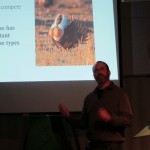
Talking about grouse
I left SICB early to head down to Monterey where I was scheduled to speak to the Monterey Peninsula Audubon Society. This was a fun opportunity; one of my first public lectures as a graduate student was to this same group more than 10 years ago. I was reminiscing about that talk, and how that was in the era when people were starting to give Powerpoint presentations on the computer (rather than getting slides developed), but nobody actually had projectors yet. I showed up not knowing that if I wanted to give a talk from the computer I needed to bring my own projector! I managed to come up with an improvised solution- they did have a media projector that accepted composite input, and I happened to have a video camera from my field studies in my car, so I was able to film my laptop screen with a hi-8 camera. Not ideal, but better than not having any AV at all!
Maybe somewhat appropriately, we had a bit of a scramble to get the audio speakers set up this time around as well, but it all worked out. The audience seemed to enjoy the talk and especially the high speed video of the grouse displays. Folks kept me there for a long time with great questions, and apparently I was even on public access TV. I even got to meet the mother and father-in-law of Marc Dantzker, one of our collaborators.
Of course no trip to Monterey is complete without a stop at the Monterey Bay Aquarium. Even with the sea otter exhibit closed for construction and no mola mola in the big Outer Bay tank, it’s still a magical place to go. I’m sure I’m not alone in this thought: standing in the dark watching the jellyfish or big tuna tank is almost a religious experience.
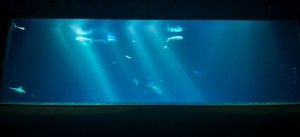
Outer Bay Tank at Monterey Bay Aquarium
I’ve been to the aquarium several times, and each time there’s something new to see. I think my favorite part was getting an up close look at a Laysan Albatross that some handlers brought out in front of the kelp tank. I also had fun using my new macro lens to get photos of shorebirds in the aviary.
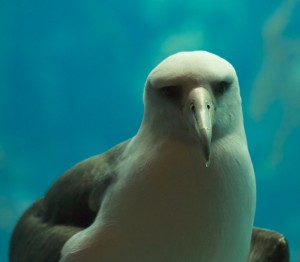
Laysan Albatross
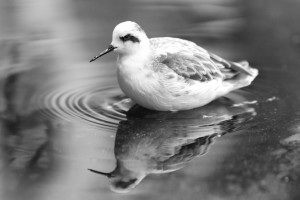
Phalarope in Monterey Bay Aquarium
Although we missed up close looks at sea otters at the aquarium, we did see them several places along the coast there, including some really nice looks right by the wharf in downtown Monterey.
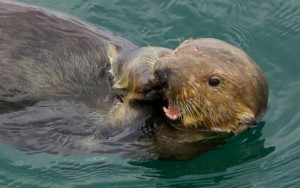
Sea Otter

